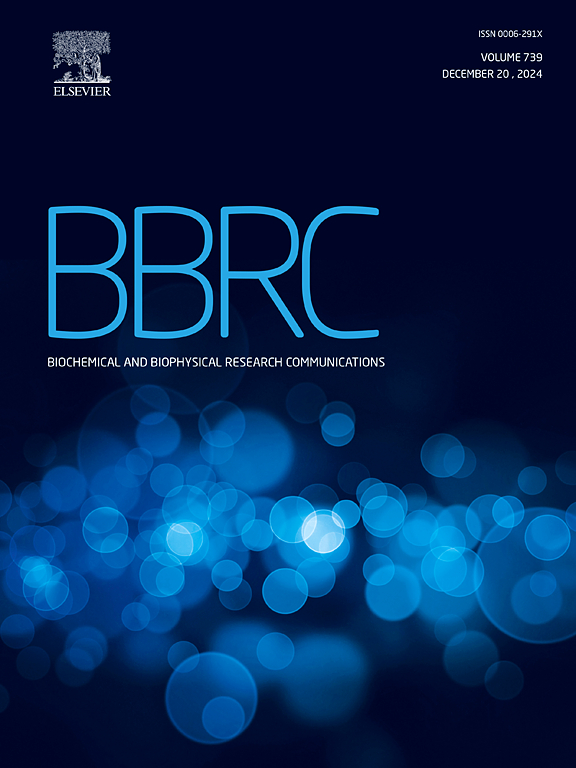FGFBP1 promotes triple-negative breast cancer progression through the KLK10-AKT axis
IF 2.5
3区 生物学
Q3 BIOCHEMISTRY & MOLECULAR BIOLOGY
Biochemical and biophysical research communications
Pub Date : 2025-04-08
DOI:10.1016/j.bbrc.2025.151763
引用次数: 0
Abstract
Triple-negative breast cancer (TNBC) is highly malignant, with rapid tumor growth and metastasis. Due to ER-, PR- and HER2-of TNBC, FGFR pathway play a pivotal role in the progression of TNBC. Its ligand FGFs is mostly released from the extracellular matrix by fibroblast growth factor binding protein 1 (FGFBP1). However, little is known about the role of FGFBP1 in TNBC. In this study, we found that overexpression of FGFBP1 significantly promoted the proliferation, migration and invasion of TNBC cells in vitro and in vivo and vice versa. Mechanistically, overexpression of FGFBP1 upregulated the expression of KLK10, thereby activating AKT, which led to proliferation, migration and invasion of TNBC cells. After knocking down FGFBP1, the expression of KLK10 was reduced and the AKT pathway was inhibited. In addition, knocking down KLK10 or inhibiting AKT pathway impaired the promotion effect of overexpression of FGFBP1 on the proliferation and invasion of TNBC cells. These results suggest that FGFBP1 may promote the proliferation, migration and invasion of TNBC cells through the KLK10-AKT axis. Targeting FGFBP1 may serve as a new therapeutic strategy for TNBC.
FGFBP1通过KLK10-AKT轴促进三阴性乳腺癌的进展
三阴性乳腺癌(TNBC)是高度恶性的,肿瘤生长和转移迅速。由于TNBC的ER-, PR-和her2, FGFR通路在TNBC的进展中起关键作用。其配体FGFs主要通过成纤维细胞生长因子结合蛋白1 (FGFBP1)从细胞外基质中释放出来。然而,关于FGFBP1在TNBC中的作用知之甚少。在本研究中,我们发现过表达FGFBP1在体外和体内均能显著促进TNBC细胞的增殖、迁移和侵袭,反之亦然。机制上,FGFBP1过表达上调KLK10的表达,从而激活AKT,导致TNBC细胞增殖、迁移和侵袭。敲除FGFBP1后,KLK10的表达降低,AKT通路受到抑制。此外,敲低KLK10或抑制AKT通路会削弱FGFBP1过表达对TNBC细胞增殖和侵袭的促进作用。这些结果表明FGFBP1可能通过KLK10-AKT轴促进TNBC细胞的增殖、迁移和侵袭。靶向FGFBP1可能是治疗TNBC的新策略。
本文章由计算机程序翻译,如有差异,请以英文原文为准。
求助全文
约1分钟内获得全文
求助全文
来源期刊
CiteScore
6.10
自引率
0.00%
发文量
1400
审稿时长
14 days
期刊介绍:
Biochemical and Biophysical Research Communications is the premier international journal devoted to the very rapid dissemination of timely and significant experimental results in diverse fields of biological research. The development of the "Breakthroughs and Views" section brings the minireview format to the journal, and issues often contain collections of special interest manuscripts. BBRC is published weekly (52 issues/year).Research Areas now include: Biochemistry; biophysics; cell biology; developmental biology; immunology
; molecular biology; neurobiology; plant biology and proteomics

 求助内容:
求助内容: 应助结果提醒方式:
应助结果提醒方式:


